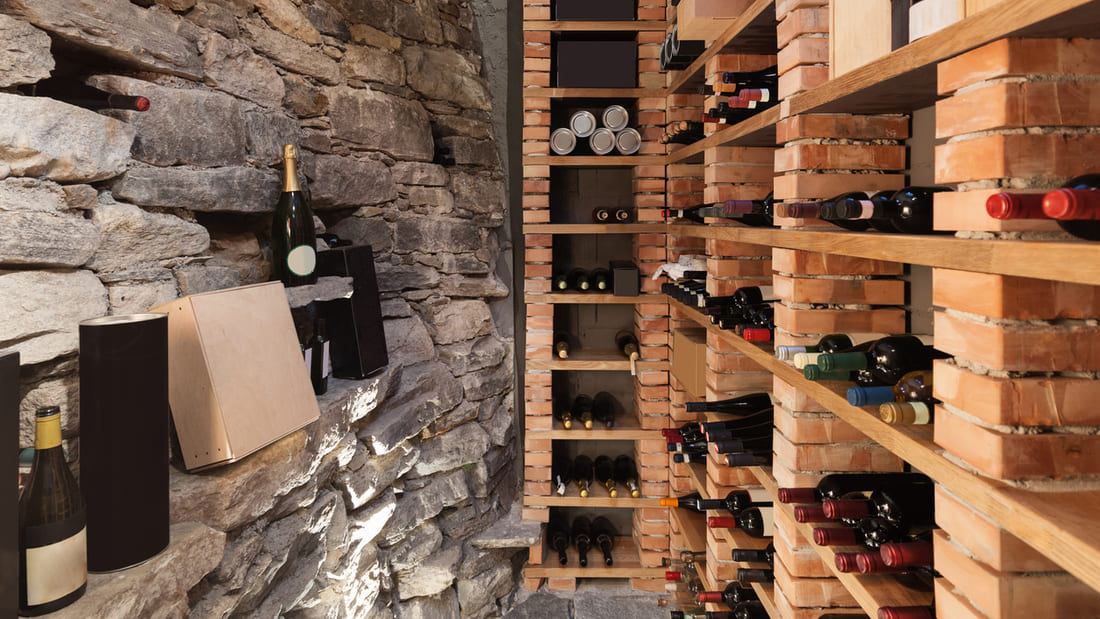
19 Apr The Importance Of Insulation In Wine Cellar Installation
Creating the perfect wine cellar is a labour of love, requiring meticulous attention to every detail. While the allure of a stunning wine display and the ideal temperature-controlled environment often take center stage, one crucial element is frequently overlooked—insulation.
Proper insulation is the foundation of a well-designed wine cellar. It ensures the long-term preservation of your prized collection and creates a comfortable space for your wines.
The Role of Insulation in Maintaining Temperature and Humidity
The primary function of a wine cellar is to provide an optimal environment for aging and storing wine. This means maintaining a consistent temperature, typically between 55-65°F, and a relative humidity range of 55-75%. Proper insulation plays a vital role in achieving and maintaining these precise conditions.
Without adequate insulation, the cellar walls, ceiling, and even the floor would act as a conduit for heat transfer, causing fluctuations in temperature and humidity. These fluctuations can have disastrous effects on your wine, leading to premature aging, oxidation, and even the development of undesirable flavours and aromas.
Insulation acts as a barrier, preventing warm air infiltration from the surrounding environment and trapping the cool air generated by your wine cellar’s cooling system. This ensures that the delicate balance of temperature and humidity is preserved, protecting the integrity and longevity of your wine collection.
Features That Need To Be Insulated In A Wine Cellar
Insulating your custom wine cellar involves various aspects, and here our team discusses what these are:
- Insulating The Walls—Your wine cellar’s walls are the primary line of defence against external temperature and humidity changes. Proper wall insulation is crucial, as it helps maintain the desired environment and minimizes the workload on your cooling system.
When selecting the proper insulation for your wine cellar walls, consider factors such as R-value (a measure of insulation’s effectiveness), moisture resistance, and compatibility with the overall design. Rigid foam insulation, such as expanded polystyrene (EPS) or extruded polystyrene (XPS), is popular for its high R-values and ability to create a seamless, airtight barrier.
- Insulating the Ceiling—The ceiling is another critical area that requires meticulous insulation. Heat naturally rises, and without proper ceiling insulation, warm air from the floors above can infiltrate the wine cellar, disrupting the delicate temperature and humidity balance.
Opt for insulation materials with high R-values, such as spray or closed-cell foam, to create a robust barrier against heat transfer. These insulation types provide superior thermal protection and help seal gaps or cracks, preventing unwanted air infiltration.
- Insulating the Floor- While the walls and ceiling are often the primary focus, the floor of your wine cellar should not be overlooked when it comes to insulation. Concrete floors are commonly used in wine cellars, and they can act as a heat sink, drawing warmth from the surrounding environment and affecting the overall temperature stability.
Insulating the floor with rigid foam insulation and a vapour barrier can help mitigate this issue. The rigid foam insulation provides the necessary thermal resistance, while the vapour barrier prevents moisture from seeping into the cellar and compromising the integrity of the insulation.
- Insulating the Doors—The entry point to your wine cellar is a critical area that requires special attention. Doors, whether made of wood, glass, or a combination, can be a significant source of heat and humidity infiltration if not properly insulated.
Look for doors with high-performance insulation, such as polyurethane or polystyrene cores, and ensure the door frames have sufficient sealing to create an airtight barrier. Additionally, consider installing weatherstripping or door sweeps to minimize air leaks further and maintain the desired temperature and humidity levels within the cellar.
The Importance Of Professional Installation
Insulation may not be the most glamorous aspect of wine cellar design, but it is undoubtedly one of the most crucial. Achieving the optimal insulation for your wine cellar is a task to take seriously. Proper installation is essential, as even the slightest gaps or improperly sealed areas can compromise the effectiveness of the insulation and the overall performance of your wine cellar. Working with experienced wine cellar designers and insulation specialists can ensure that your insulation is installed correctly, maximizing its thermal efficiency and contributing to the long-term preservation of your wine collection. For information about how we can help with custom wine cellar planning and installation, please call Signature Cellars at 1300 570 636 to discuss your requirements with our experienced team.




No Comments